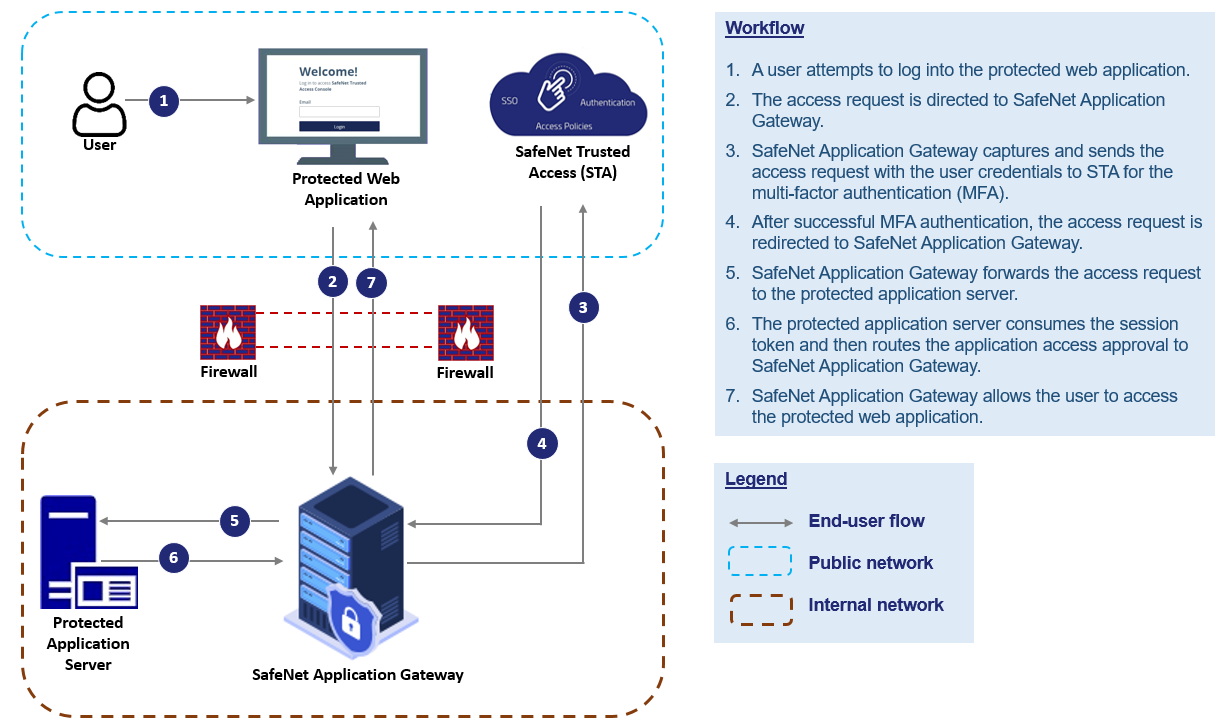Deployment options
Deploying the SafeNet App Gateway agent in an organization’s on-premise environment or on a cloud computing platform facilitates seamless integration of SafeNet Trusted Access with non-standard web applications that do not follow SAML 2.0 or OIDC standard communication protocol.
This section provides guidelines for secure and reliable deployment of SafeNet App Gateway, which guides administrators or cloud operations teams in minimizing the deployment risks and streamlining the deployment process.
The agent can be deployed as a Single Node or High-Availability (HA) Cluster. The choice between the two deployment models depends on the customer's requirements.
The two deployment options are listed below:
Single Node deployment
Single Node deployment may be used for testing environments as the setup is simple and easy to manage, making it suitable for development, testing, and small-scale deployments.
The following image describes the authentication flow of a single-node SafeNet App Gateway deployment.

For the detailed steps to deploy SafeNet App Gateway as a single node in the cloud environment, refer to SafeNet App Gateway deployment documentation on the Thales documentation portal.
High-Availability (HA) Cluster deployment
High Availability (HA) deployment is typically associated with production environments. The goal of an HA deployment is to ensure that the system remains available and operational even in case of failures, such as hardware failures and network or other unexpected issues.
The following image describes the authentication flow of a SafeNet Gateway HA cluster deployment.
For the detailed steps to deploy SafeNet App Gateway as a multi-node in the cloud environment, refer to SafeNet App Gateway deployment documentation on the Thales documentation portal.

In HA cluster configuration, the agent does not support session persistence. Instead, the workflow depends on the load balancer to provide session persistence.

